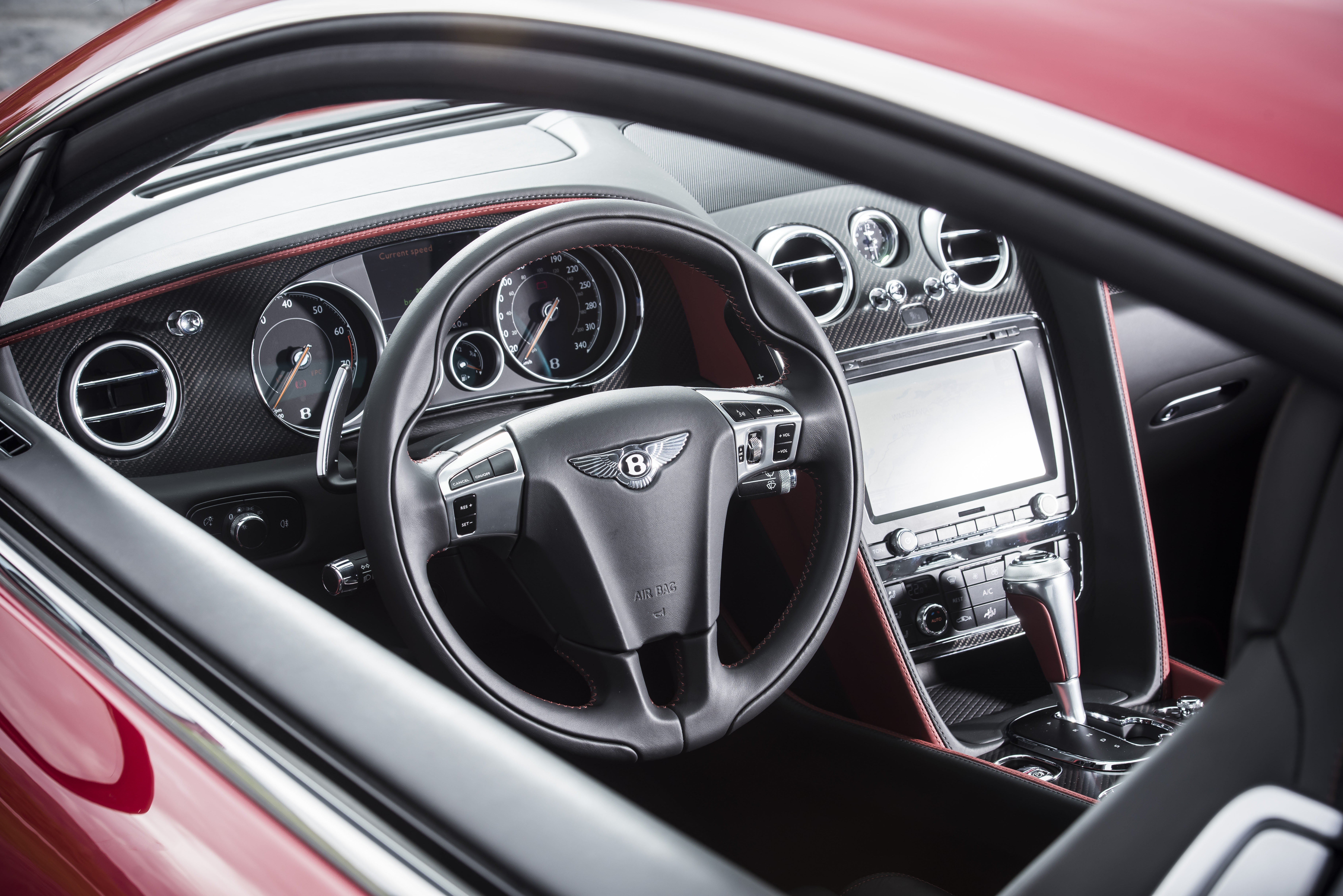Just how much has it changed
Customers have always loved the look of the car since the original, and so, styling changes over the years, including when this second-generation car was introduced 2011, have never deviated from the same fundamental shape. The new model retains the big rectangular grille, huge LED-ringed main beams flanked by smaller secondary lights, strong lines, distinct rear haunches and that very resolutely sculpted rear. New for this car, however, are the larger, more aggressive air dams at the front, and new chrome air vents in the shape of Bentley’s ‘Flying B’ on the fenders. More chrome has been added down the sides of the car including a new strip that wraps around the rear bumper to help develop the car’s width. Lastly, the sportier models – the V8 S and the Speed – get a new rear diffuser. There are also a few more customization options available in the form of piant shades, upholstery and wheels. And ever a treat to behold on the Continental GT are its gigantic 16.5-inch front brake discs, with their massive calipers, that almost engulf the 20-inch wheels.
 The interiors are as oppulant as ever, with their two-tone seats covered in the finest of leather, slabs of wood in the dashboard, and switches made of knurled and polished metal. And you have a motorised arm that extends forward to ‘hand over’ your seatbelt when you get in, before retreating to its slot beneath the rear window. If you look really hard, you might find a button or two that vaguely resembles one you’d find on an Audi, but let that only be an indicator of the tech that’s hiding behind it. The touchscreen system is showing signs of age now, but its layout is clear and classy, and now also incorporates onboard Wi-Fi that works with up to four devices simultaneously.
The interiors are as oppulant as ever, with their two-tone seats covered in the finest of leather, slabs of wood in the dashboard, and switches made of knurled and polished metal. And you have a motorised arm that extends forward to ‘hand over’ your seatbelt when you get in, before retreating to its slot beneath the rear window. If you look really hard, you might find a button or two that vaguely resembles one you’d find on an Audi, but let that only be an indicator of the tech that’s hiding behind it. The touchscreen system is showing signs of age now, but its layout is clear and classy, and now also incorporates onboard Wi-Fi that works with up to four devices simultaneously.
Behind the wheel
The four engine options available – all twin-turbocharged with an eight-speed automatic and all-wheel drive – are the 500bhp V8, the 521bhp V8 S, the mighty 626bhp Speed and the classic W12. It’s the last engine that’s been given an upgrade with an increase in power to 582bhp. Is there any difference? Not noteworthy, and we’d need testing equipment to tell you if it performs any differently. The engine now gets cylinder deactivation which shuts down six out of the 12 cylinders when you don’t put too much stress on the engine. The result, the automaker says, is that the W12 can now cover around 640km between fill-ups, which is pretty amazing for a 2.2-tonne car. Interestingly the system has been available on the V8s for some time now but not on the top end W12 Speed.
All the motors are more than capable of hurtling the big car along at a invigorating pace, although there’s no escaping the fact that the W12 cars do it far more fluently than the V8s. The 4.0-litre V8 does get one back by sounding a lot nicer though, and while you have to coax a roar out of the W12, a bark from the V8 is only ever a slight blip away, especially in the S. As the name states, the Continental is a GT or Grand Tourer, so handling is never going to match up to an out-and-out sportscar, but it feels completely secure and planted on the road. It is, however, very wide, so if your grand tour finds you on narrow roads, you’d best keep your eyes open.
Verdict
The GT delivers pretty much all that its customers are looking for. Not only is it heartlessly good at delivering its smooth yet potent performance, it’s also got all the luxury and equipment you could ask for. It also looks really good, with incredible road presence, a lot of shiny bits, and that all-important Winged B on its nose. Which one should you choose? Well, the V8 is immensely capable for an ‘entry level’ variant, the improved W12 seems a great all-rounder, there’s the V8 S if you want a little more dynamism and the Speed is just the all-encompassing expression of the GT. So take your pick.
Source: Autocars India


